A Private Tour today in NW Norfolk, looking at more than birds, including a selection of other early summer wildlife. It was another lovely sunny day, warm but with a nice cool breeze off the sea on the north coast. We met in Brancaster and headed over to Snettisham for the morning.
As we walked in through the bushes, we could hear a selection of warblers singing deep in the bushes – Chiffchaff, Blackcap, Common and Lesser Whitethroat. The delicate purring of a Turtle Dove filtered through them, so we walked up towards the dense hawthorns, dripping with flowers, from where the sound seemed to be coming. As we were scanning the bushes, the female flew up to join the male on a branch. We had a great view of them through the scope.
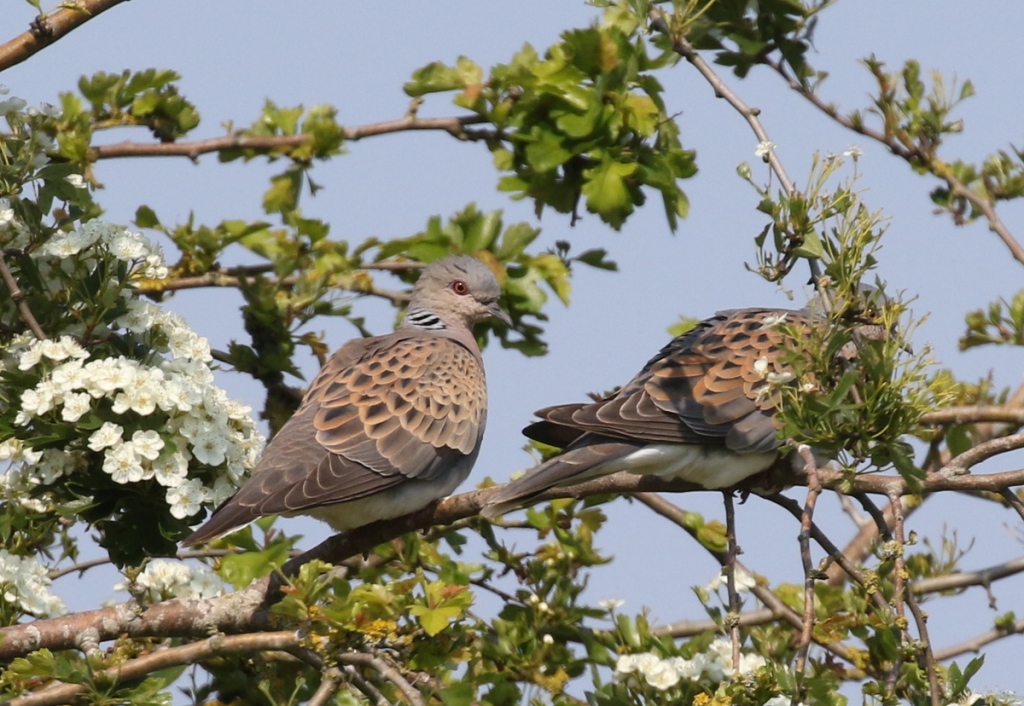
While we were watching the Turtle Doves, we heard the distinctive sound of a Grasshopper Warbler reeling from somewhere further up. Most of the Grasshopper Warblers have gone quiet now, at least during daylight hours, so it was a bit of a surprise to hear one in the middle of the morning. We walked on to see if we could track it down, but it seemed to be coming from deep in an inaccessible area of scrub and then it went quiet. There were Reed Warblers and one or two Sedge Warblers still singing in the reeds.
Walking out of the bushes, several Linnets were feeding on the short grass below the outer seawall. Our first Brown Argus of the day – we would go on to see quite a few – was flitting around the storksbill. A tiny white moth, a Swan-feather Dwarf (Elachista argentella) flew up from our feet.
Up on the seawall, the tide was coming in and the water was already on the beach. A large flock of thirty or so Sanderlings was put up from the sand by a dogwalker and flew round over the water. As they twisted and turned, we could see one black-bellied Dunlin in with them. They landed down on the shore again and started feeding. In various stages of breeding plumage, they are much darker now than we see in the winter.
We dropped down off the seawall and continued on up through the middle. There were more warblers in the bushes and Linnets on the grass. The pools in the middle held a few Four-spotted Chasers and Azure Damselflies and patches of Water Crowfoot. Butterflies included several Small Copper, Small Heath and a single Painted Lady. As we got up towards the crossbank, a Meadow Pipit flew up onto the bushes on the seawall ahead of us. We stopped to watch our first male Common Blue butterfly of the day, flying fast up and down over the longer grass.
From up on the outer seawall, the tide was in now. A large flock of predominantly Ringed Plovers was trying to roost on the beach, but kept getting flushed by walkers and dogwalkers. We could see a Ringed Plover hunkered down on the top of the beach in one of the cordons, presumably incubating. As two people walked along the shore line with their dogs, well outside the cordon, the Ringed Plover came off the nest and ran up the beach, only returning once they had passed. Just goes to show how sensitive they are to disturbance, which is a huge problem for birds which nest on the beaches here.
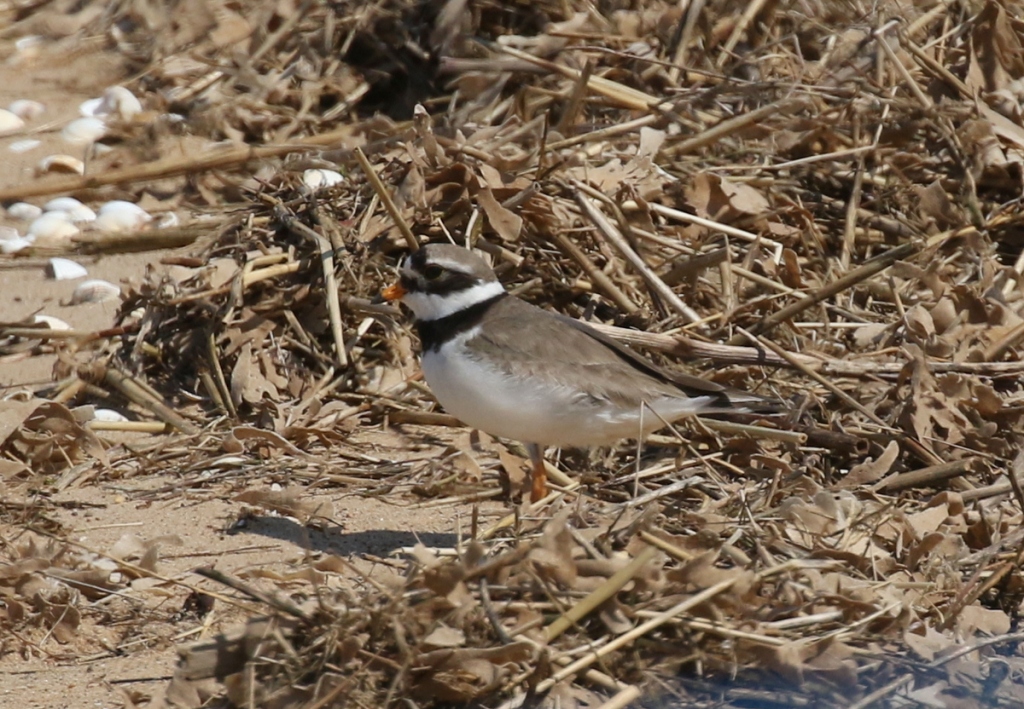
Crossing over to the inner seawall, we looked out across Ken Hill Marshes. There were lots of waders roosting on here, sitting out high tide on the Wash. Hundreds of Oystercatchers were over the back and a good number of Black-tailed Godwits on the slightly closer pools. Scanning through, we found a single Bar-tailed Godwit too. There were several groups of Ringed Plovers on here too, and further up we could just see two different waders with some of them on a muddy island. There was too much heat haze to be able to make them out clearly though, so we walked further north along the inner seawall, to see if we could get a closer look.
When we got closer, we could see that as we suspected, they were two Curlew Sandpipers, adults moulting in (or out?) of rusty breeding plumage. They were first reported here almost a week ago now, so are clearly in no hurry to move on. Northbound spring migrants usually move on quickly, and it seems too early for southbound birds already (it can’t really be autumn already?!). Or perhaps they could even have abandoned hope of breeding due to the long, cold weather this spring?
There were at least two Little Gulls out on the marshes too, immatures in their 1st summer/2nd calendar year. We got one in the scope, dwarfed by the surrounding Black-headed Gulls. A couple of Black-tailed Godwits were on a small pool on the grazing marshes the other side, along with two Avocets and an Oystercatcher. We stopped to photograph a Green-veined White butterfly on the flowers on the bank. Another Turtle Dove flew past us, heading towards Heacham. A Cuckoo was calling in the distance. A male Marsh Harrier flew in and started circling low over the grass just the other side of the crossbank.
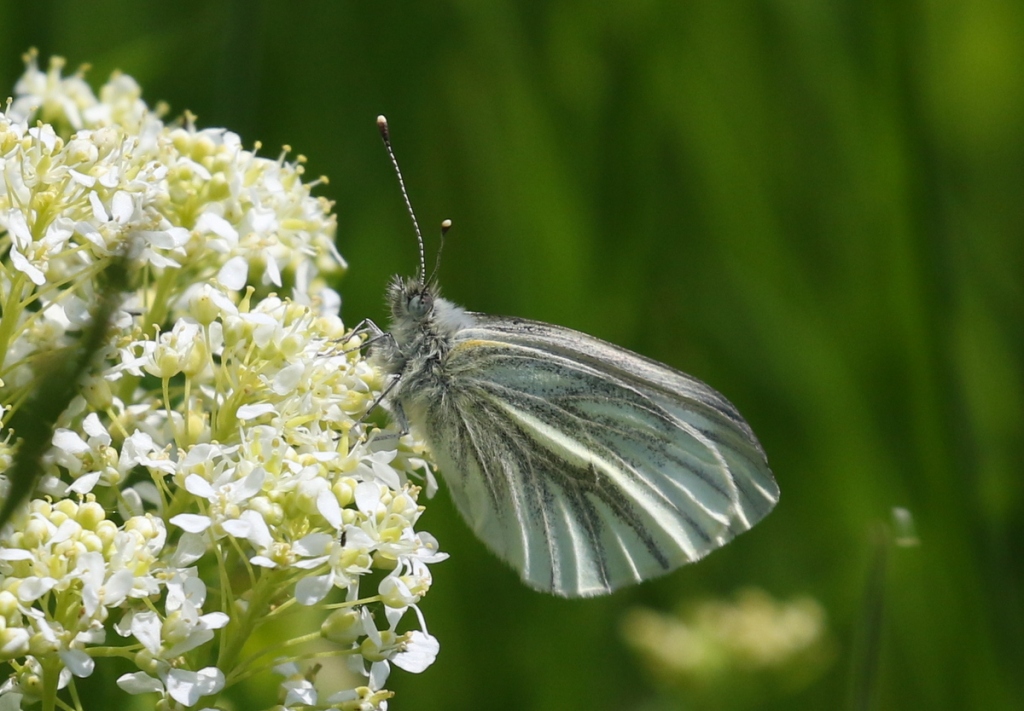
There was a nice selection of other birds on the marshes as we walked back, stopping to scan from time to time. A Great White Egret on one of the pools really stood out, and there was a single Spoonbill in with the geese at the back, fast asleep (doing what Spoonbills like to do best!). A nice selection of wildfowl includes a couple of lingering late Wigeon and a feral Barnacle Goose. A Common Tern was hunting for fish in the channel just below the bank. A Hobby flew past, but typically disappeared off fast to the south.
We dropped down off the bank and cut back in to the southern end of the Coastal Park. A Hairy Dragonfly was patrolling one of the pools, chased by the Four-spotted Chasers. Back through the bushes, the Turtle Doves and Grasshopper Warbler were quiet now, but we did find a gorgeous metallic Green Hairstreak basking on a bush by the path.

It was already lunchtime by the time we got back to the minibus, but we elected to drive somewhere more scenic to eat. Thankfully, we were allowed to park just beyond the payhut at Holme, despite not having booked in advance, as it wasn’t full, and we had a late lunch looking out over the saltmarsh towards the beach. The new car park booking system at NWT Holme Dunes is a complete nightmare – it is hard to plan in advance what we might want to do and even harder to know exactly what time we might get there if we are somewhere else for the morning. Not surprisingly the car park seems to be booked almost entirely by beach goers, looking at the occupants of the cars leaving and the almost total lack of anyone looking at any of the wildlife on the reserve!
After lunch, we set off along the coast path into the dunes. There were lots of butterflies in the short grass, several Wall and more Small Heaths. It didn’t take us long to come across our first Southern Marsh Orchids, just coming in to bloom, although these were not our main orchid target here this afternoon.
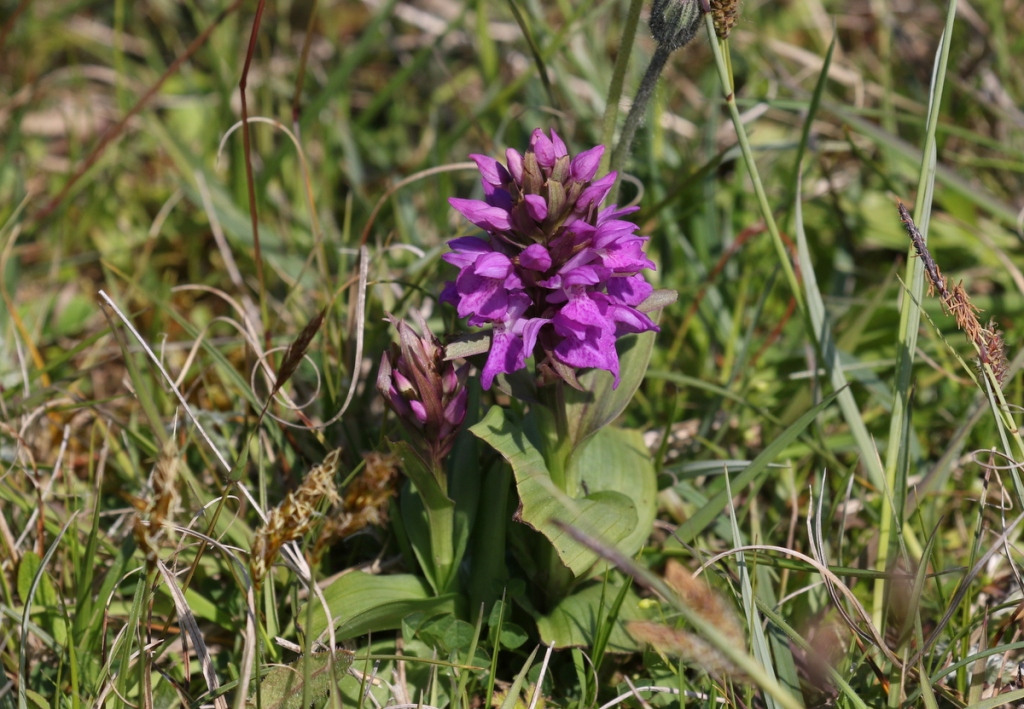
A Cuckoo was calling in the trees and we carried on further in the hope of seeing it, but just caught a quick glimpse before when it landed low on a branch briefly, but it saw us and disappeared back. There were lots more butterflies in here, more Wall, Common Blues and Brown Argus. The moth list was boosted with a single Yellow Belle and several Plain Fanner (Glyphipterix fuscoviridella) which flushed from the grass.
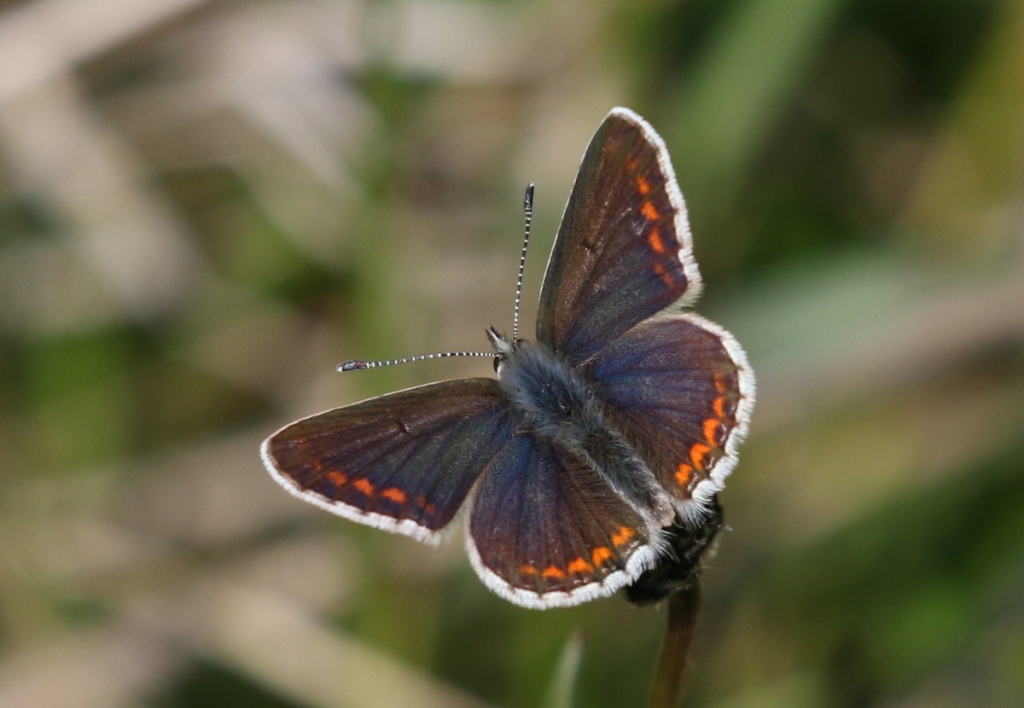
It took a bit of searching, but we eventually managed to find a few spikes of Man Orchid. Some look a bit behind, perhaps not a surprise given the cold spring prior to the last couple of days, but a couple were in find condition and much admired!

Man Orchid was the main target, but we had hoped to look for Early Marsh Orchid too. But all the areas we have seen them in the past seemed to be fenced off for the ponies – we hope the ponies don’t like eating orchids! We followed the fence round, but couldn’t find a way to get where we wanted to go. A Stonechat perched on the fence briefly.
Wandering round trying did produce a nice selection of other things though. When we stopped to photograph some more Southern Marsh Orchids, we noticed movement in the long grass. A small Natterjack Toad was walking through – we could see the distinctive yellow stripe down the middle of its back. We don’t often see them, as they are predominantly nocturnal, so this was a really nice surprise.

Rounding another corner, we came across a mass of tiny Green Long-horn moths (Adela reaumurella), the golden-green metallic males with their outsize antennae dancing in the sunshine around the tops of the trees, trying to attract a female. Quite a spectacle. We did see one or two shorter ‘horned’ females too, in the vegetation below.
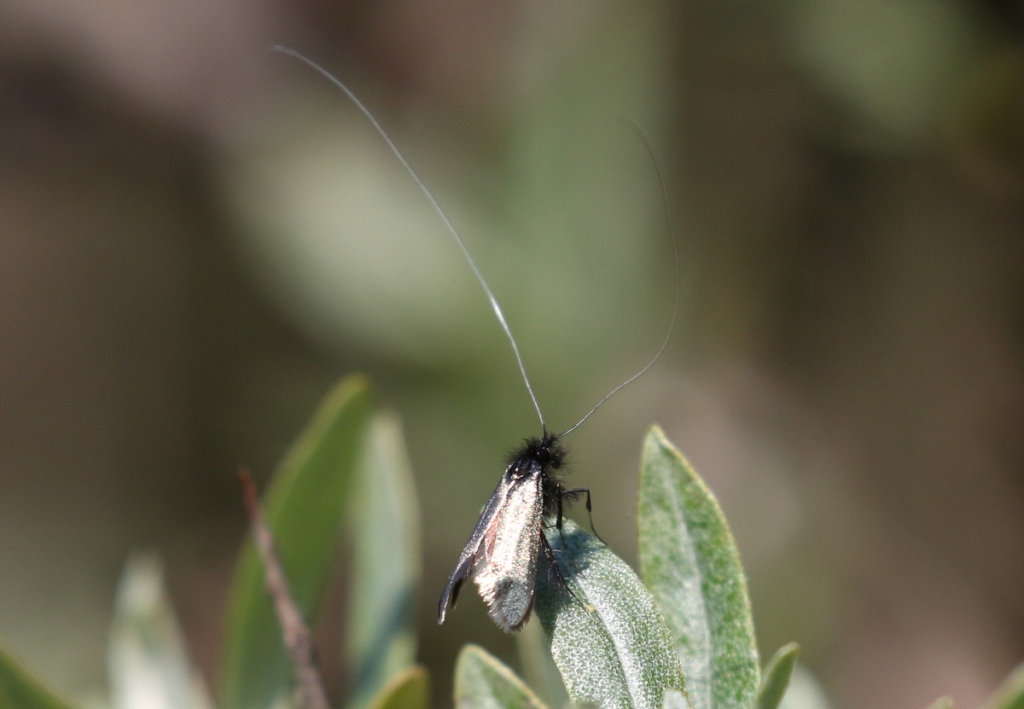
We had seen several Hairy Dragonflies this morning, but now we came across one resting on some brambles, which gave us a chance to get some photographs of this normally very active species, and admire its hairy thorax.
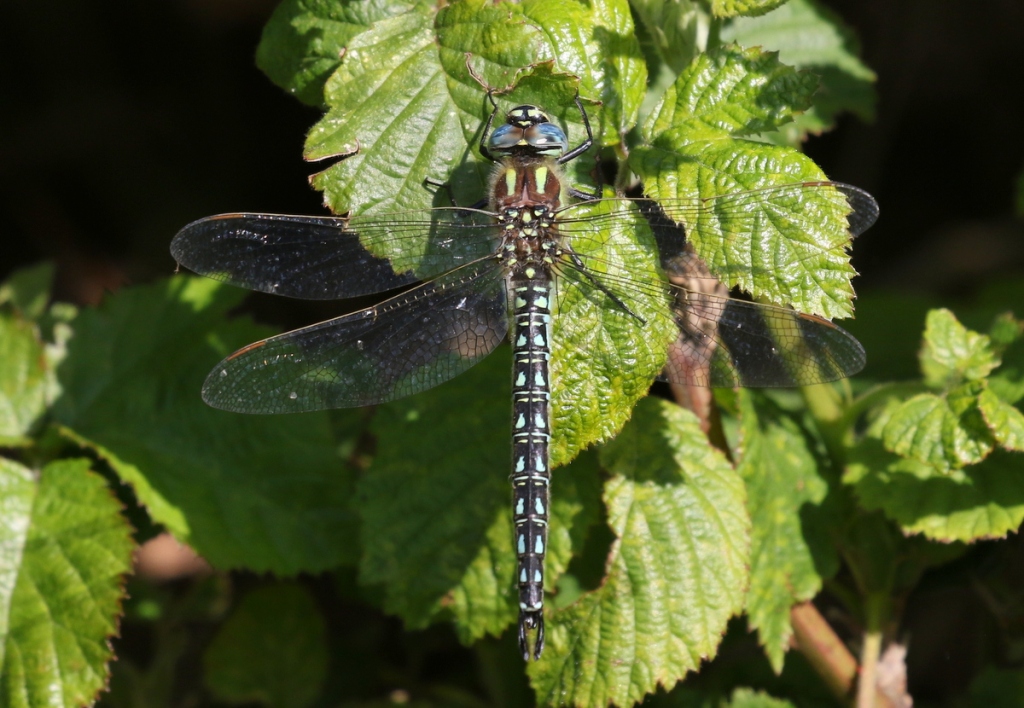
The Cuckoo finally gave itself up as we started to walk back, initially flying off away from us, but then we came out from behind some bushes and found it perched on a dead branch out in the open. We had a quick scan from the top of the dunes, looking out over the beach. There were lots of people out there today and we couldn’t see many birds. We could make out a few Sandwich Terns passing by in the distance offshore. Then it was back to the minibus and time to head for home.
















